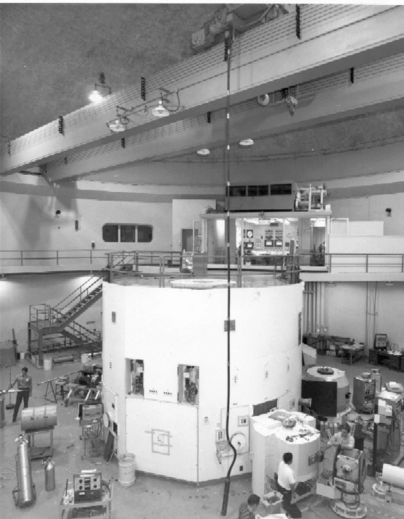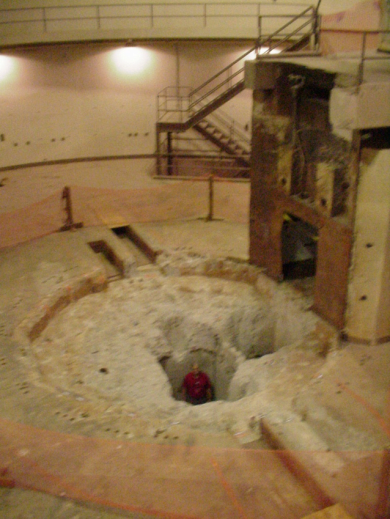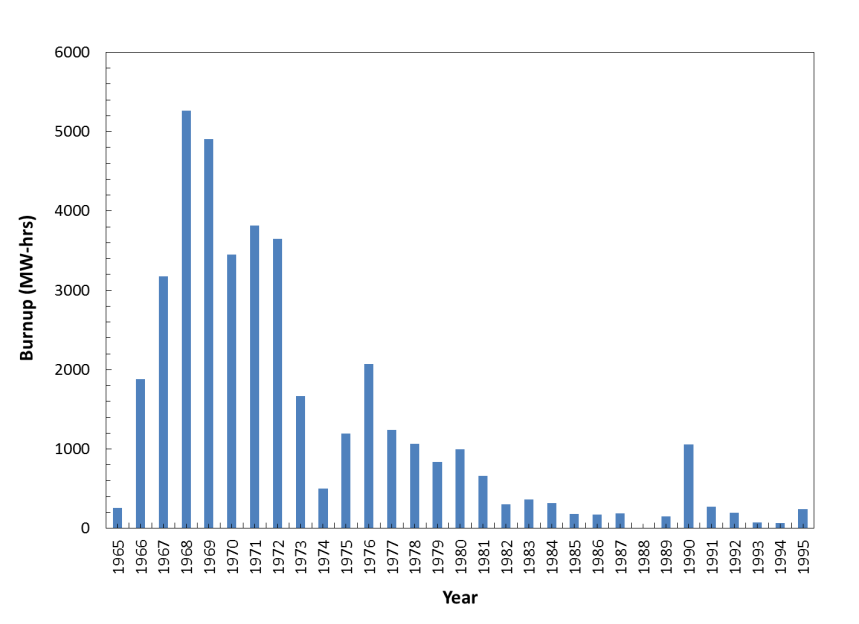The unofficial beginning of the Georgia Tech reactor occurred in 1956 at the Nuclear Center in St. Petersburg, Florida. Southern governors gathered to determine what could be done to move the South into the nuclear age. The ability to build the reactor was the result of a cooperative endeavor of civic leadership headed by Frank Neely and the Tech Reactor Project under Dr. W. B. Harrison of the Engineering Experiment Station, the precursor to the Georgia Tech Research Institute. At the 1957 meeting of the Georgia Legislature, the Georgia Nuclear Advisory Commission was created and Mr. Neely was named chairperson. This commission endorsed the maximum possible state support for the nuclear facilities at Tech. That year $2.5 million of state surplus funds were promised to the project. The National Science Foundation contributed a $750,000 grant. Also, the Atomic Energy Commission and other sources gave materials and financial aid. These contributions totaled $4.5 million needed to build the reactor.
Between 1958 and 1960 designs for the reactor were completed by theGeneral Nuclear Engineering Corporation and for the reactor building and support laboratory building by Robert and Company Associates. Construction was started by Blount Brothers Construction Company in the last months of 1960. In the final months of 1963, the facilities were occupied by Tech personnel. Initial criticality was achieved at four minutes past midnight on December 31,1964 and scheduled operation at 1 MW began in 1965.
The first director was Dr. C. J. Roberts. He was there until the early 1970's. He was followed as director by George Ledicott. The license was amended on June 6, 1974 to increase the maximum power of the GTRR to 5 MW. Dr. Monte Davis became the director of the Neely Nuclear Research Center in 1973 and was followed by Dr. John Russell, who served as director of the reactor from 1979-1983. Dr. Ratib Karam became the director of the Neely Nuclear Research Center in 1984.
The GTRR had eight shielded beam ports and provided a maximum incore flux of 1014 n/cm2-sec at 5 MW operation. In addition to the horizontal beam ports, there was one vertical beam access port. On one side of the reactor, a shielded room intended to serve as a medical irradiation facility was constructed as an integral part of the reactor shield. The intended use of this room was to be boron neutron capture therapy and as a result a collimated thermal neutron beam was available inside this room.
The reactor had a pneumatic transfer system that could transport vials to either a hot cell complex or radiochemical labs. Other major accessories used during its operating history include a neutron diffraction spectrometer, a beam chopper and neutron cameras. Over the years the reactor was used as a training and teaching facility as well as a research facility. In the 1980s students were employed as operators at the facility.
In 1994, the NRC license came up for renewal and Georgians Against Nuclear Energy (GANE) filed an intervention in the relicensing process. However, most of the intervention contentions were dismissed and the license was awarded in May of 1997. When Georgia Tech served as the Olympic Village for the 1996 Olympics, a decision was made to shut down the reactor for the Olympics and remove the highly enriched fuel. On November 17, 1995, the reactor's operation ceased, allowing the reactor fuel rods to decay for shipment. The fuel rods were shipped to Savannah River Site on February 13, 1996. The license renewal contained an amendment to replace the highly enriched fuel with low enriched uranium in the form of U3Si2 as part of the RERTR program. The fuel was made but never shipped as Georgia Tech did not sign for its delivery in the Summer of 1997.
On July 1, 1997 Georgia Tech informed the Nuclear Regulatory Commission of their intent to decommission the GTRR and Dr. Nolan Hertel was named the Director the Neely Nuclear Research Center. A possession only license amendment was approved in April 1998 by the NRC. The decommissioning plan was submitted in July 1998 before the NRC regulations regarding decomissioning changed and required public participation. The heavy water that flows through and around the reactor core and acts as a coolant was removed and shipped to Savannah River Site in the summer of 1998. Among the strongest reasons cited for the permanent shutdown and decommissioning of the reactor was its underutilization. This reason was strongly supported by the historical burnup record shown below. A decommissioning plan was prepared by NES and submitted to the NRC in July 1998. In July 1999, the NRC issued a license amendment authorizing the decommissioning of the GTRR.
A Technical Safety Review Committee consisting of current and former Georgia Tech personnel was established to review and approve plans, procedures and policies. The decommissioning project was undertaken with CH2M Hill providing the executive engineering for the project and the decommissioning work and waste disposal done by what were then IT Corporation and GTS Duratek. The contractor mobilized on the Georgia Tech site in November 1999 and began the dismantling process. By February 2000, the reactor support systems; e.g., primary and secondary cooling water systems, bismuth cooling system, rabbit system, etc. were removed and packaged for off-site disposal. The remainder of the facility was decontaminated as necessary and all waste and remaining parts of the reactor was removed by the end of the Fall of 2001.
Following development of project plans and procedures, the final survey document and request to terminate the reactor license was submitted to the USNRC in June 2002. The final survey is an exhaustive search of the facility using radiation detection instrumentation to ensure that the facility has been properly decontaminated for decommissioning and is free of radioactivity created during the operation of the facility. In the Fall of 2002, the U.S. Nuclear Regulatory Commission conducted a confirmatory survey of the facility. In June of 2003, that survey report was released by the USNRC and the facility was found to be decontaminated and fit for unrestricted use. In December 2003, the final notification was sent by the USNRC terminating the license of the facility.
In 2005-2006, the Co-60 used in the hot cells to perform irradiations was removed and disposed of. In the Summer of 2007, the Neely Nuclear Research Center was disbanded. In 2013, the remainder of the Neely building was demolished after decontamination of some locations of concern in the high bay, the hot cells and labs formerly used for work with radioactivity.
The Georgia Tech's reactor began in 1964 as a state of the art research facility where engineers would train to operate commercial nuclear power plants and researchers would explore the frontiers of biology and materials sciences. Over time, the need for a nuclear research reactor changed dramatically and the elimination of the research reactor has had no visible impact on the enrollment and research activities of the nuclear engineering program.


The GTRR in its heyday and after its decontamination and decommissioning in 2002.

The Burnup History of the GTRR
